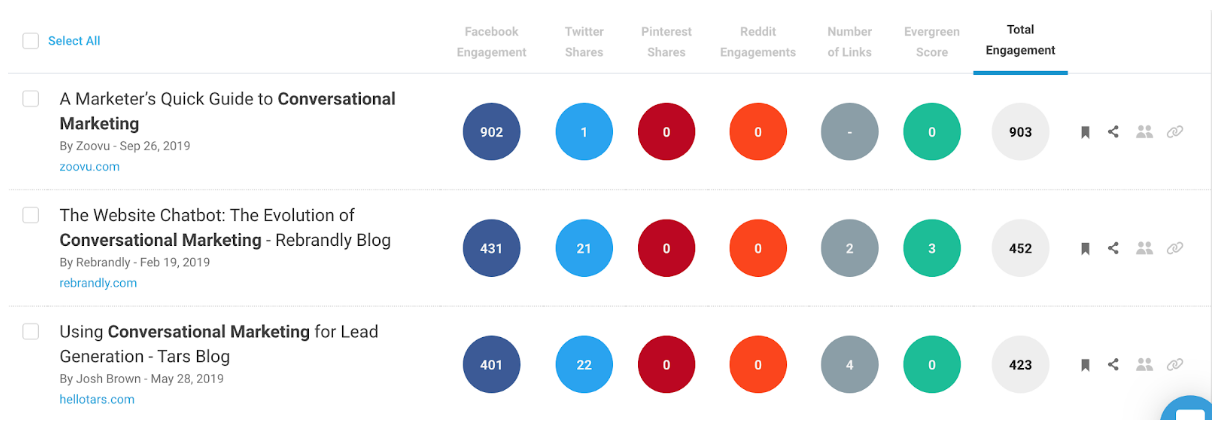ROI is a tricky thing to track, but it can do wonders for your business if you know who’s buying what from where.
While many marketers still struggle to get to grips with measuring ROI from social media, it doesn’t have to be overwhelming and complicated.
Increasing the ROI of your activity on social media can help drive engagement, sales, and revenue this year. Putting it on the backburner might mean you’re missing out on potential customers – not something you want to do when there’s so much competition out there.
We’ve put together a list of key things you should pay attention to if you want to increase your social ROI in 2020.
First Things First…
Measure
One of the major reasons ROI for social is so low is because brands don’t take the time to measure their performance. If you don’t measure it, you can’t drive it; it’s as simple as that.
According to Simply Measured’s most recent State of Social Media Marketing report, nearly one in five of the brands surveyed indicated that they’d never had conversations about social ROI.
But, to successfully increase your ROI, you’re going to need something to measure. This means setting up a funnel which directs your followers to a place where they can buy from you.
Map out how you see people making a purchase via social media, whether that’s through premium content on a landing page and then a nurturing email sequence, or by linking directly to product pages with a social media discount.
Define the Metrics that Matter to Your Business
What social media metrics are actually important in driving revenue and sales for your business? This might vary depending on what kind of business you run and the social activities you carry out.
You might choose to track reach, audience engagement, site traffic, leads generation, sign ups and conversions, or revenue generated.
Lookback
Once you know what you want to measure, dig into your existing metrics to look for clues to tactics that are already driving your desired outcomes.
Know Your Audience
If you don’t know who is engaging with your content, you won’t have any context behind your metrics. Explore the built-in analytics of your social networks to get key demographic data on your audience.
Measure Your Results
Measuring your ROI is important so that you know what’s working and what’s not.
Setting up UTM tracking codes is an effective way to do this. These are snippets of simple code that you can tack onto the end of a URL to track the performance of it. You can track the source, medium, campaign, term, and content depending on which of these tie in best with your goals.
To set up UTM tracking codes, you’ll need to have Google Analytics installed. Then:
- VIsit Google’s free URL builder page
- Create a unique URL for each ad or link
- Check and measure your success in the Acquisitions > Campaigns section in Google Analytics
We recommend using a tool like bit.ly to create shorter URLs so that your visitors don’t know you’re using UTM codes to track performance.
TINT’s hotspots and Global CTAs allow you to embed your unique UTM codes so that you can track the performance of shoppable content. This will help you seamlessly track your campaigns over time.
Now that you know what is important and how to track, here are a few ways to drive social engagement.
1. Social Listening
Analyzing what other people in your industry are talking about on social media and tracking what posts are getting the most engagement can help you gain insight into the type of content your audience wants and needs.
You can then apply relevant tactics to your own channels depending on the metrics that matter the most to you.
Social listening can also help you determine which social platforms have the most engaged users in your niche.
How to Put This Into Action:
Use a tool like BuzzSumo, which can help you analyze what content performs best for any topic as well as provide insights into which topics get the most shares. In addition, you can see which social network is the most active for certain keywords.
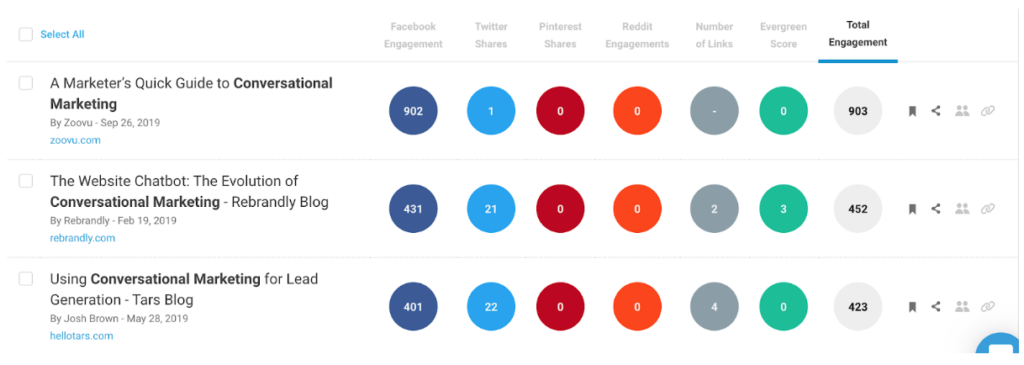
The topic of conversational marketing seems to get the most engagement when shared on Facebook.
2. Partner Up With Micro-Influencers
Gone are the days of paying huge sums of money to get a mention on big-name celebrity social accounts.
Today, it’s all about the micro-influencer or nano-influencer.
These are niche social accounts with between 1,000 and 10,000 followers. They tend to have hyper-engaged audiences that are interested in a specific topic and have double the engagement rate of accounts with over 10,000 followers.
Micro-influencers are so effective at generating engagement and driving traffic and sales because people still relate to them as everyday consumers and peers. And, when you learn that 70% of millennials are influenced by the recommendations of their peers, it’s easy to see why partnering with micro-influencers can be really impactful.
Identify key micro-influencers in your industry by scouring relevant hashtags on social media and reach out to them about partnering up.
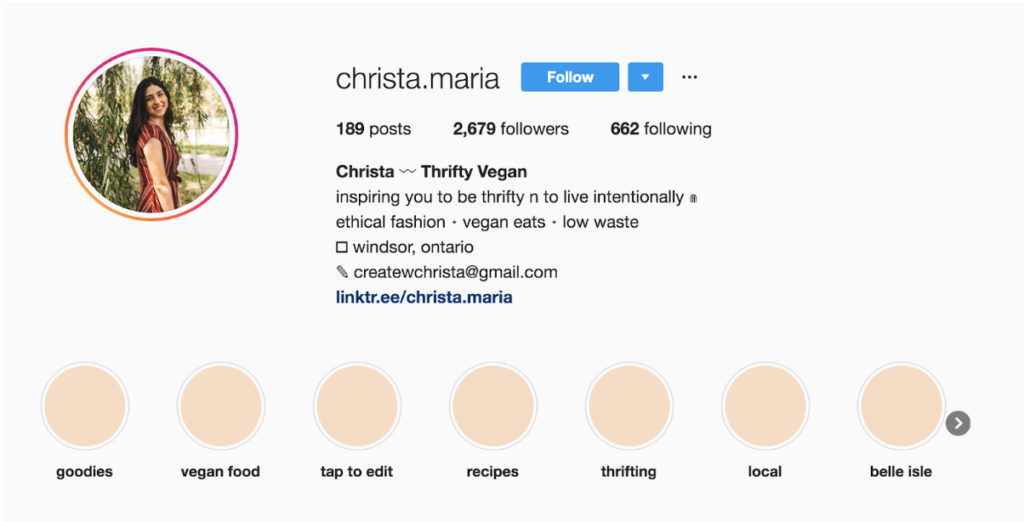
Christa Maria regularly posts content under #ecoclothing that gets good engagement and she has less than 10,000 followers.
3. Use UGC to Show Authenticity
92% of people are more likely to trust a recommendation from another person over branded content, which means they’re more likely to buy something after seeing it in a user generated image.
But don’t forget to track your efforts!
If you aren’t sold on this idea, run an A/B test of a brand image alongside a UGC image from one of your customers and see which one drives better results. A huge part of increasing your ROI is figuring out what works and what doesn’t, so it’s vital to measure any new ventures like this so you can compare the results to your traditional methods.
How to Put This Into Action:
Create a branded hashtag and encourage or incentivize your audience to share their images and videos of your products. You can then tap into the library of content to share across your social channels, garnering higher engagement levels and more sales.
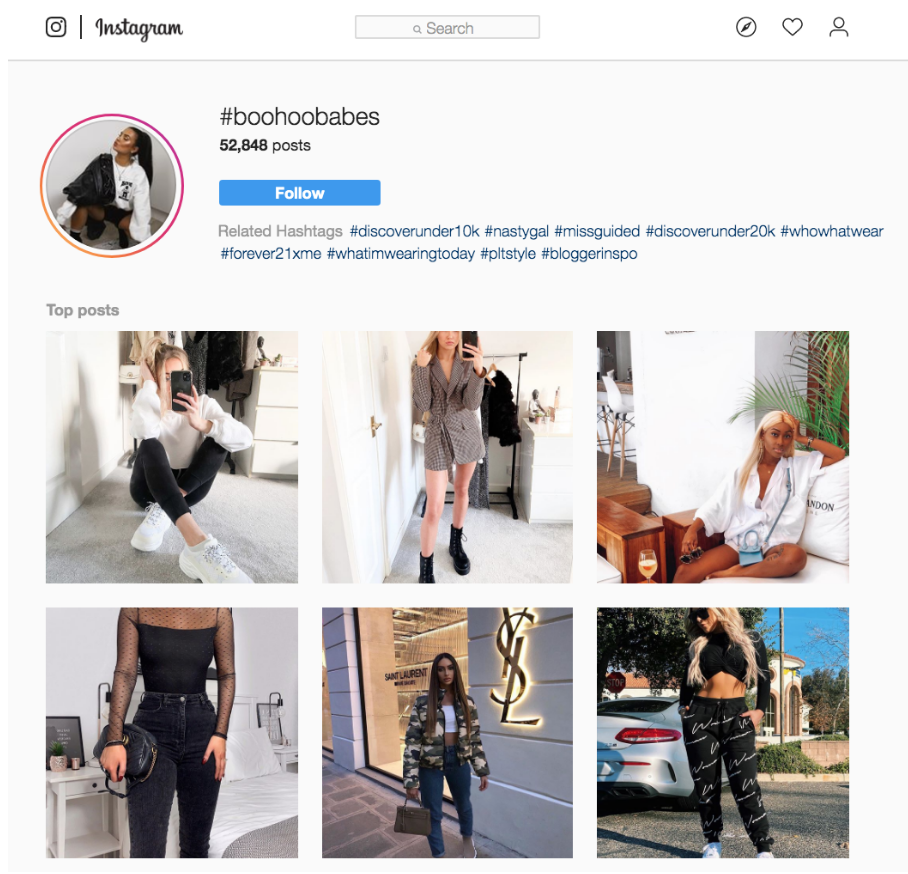
Boohoo encourages its customers to share their clothing pics under the hashtag #boohoobabes. It then reshares the best posts on its feed.
4. Retargeting
It takes around seven touchpoints for a consumer to make a purchase from a brand. This means you probably need to have far more interactions with prospects than you think.
A touchpoint can be anything from showing up in their Instagram feed to a call with customer support – it’s basically any time a lead has seen your brand or interacts with it.
Retargeting is a great way to show up in the social feeds of consumers that already know who you are. Perhaps they’ve already been on your website, or perhaps they’re on your email list but need a few more touchpoints to push them in the right direction.
Research has shown that incorporating UGC into paid social ads and remarketing campaigns yield better results and can really superpower your ROI.
How to Put This Into Action:
Gather together relevant UGC, whether it’s customer images or reviews, and weave them into your social ads like Feeling The Street does below.
Make sure your social ads target people that have already engaged with your brand in some way. For example, Facebook lets you upload your email list or target people that have visited a certain page on your website.
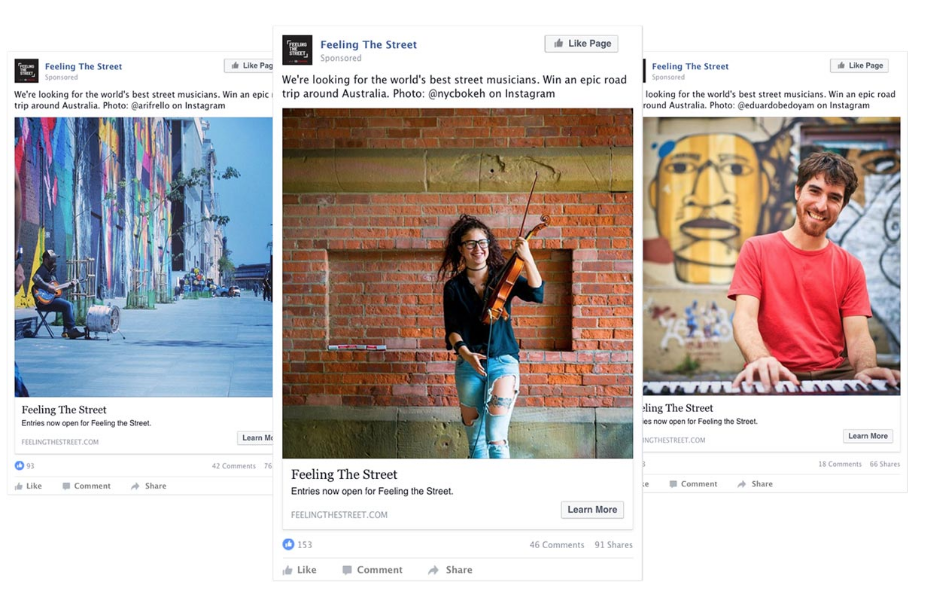
5. Engage Individually With Your Audience
Customers love personal attention and they like to feel heard by brands. You can tap into this by responding to individual comments and engaging directly with specific followers on social media.
This not only builds trust and respect, but it means people will be far more likely to do business with you.
Research from Epsilon shows that consumers are more likely to buy from a brand if they offer a personalized experience, and interacting directly with them takes this one step further.
How to Put This Into Action:
Actively respond to public customer comments and messages on your social channels. You can also dive into discussions that are already taking place around your brand and share your thoughts and opinions on trending (but relevant) topics.
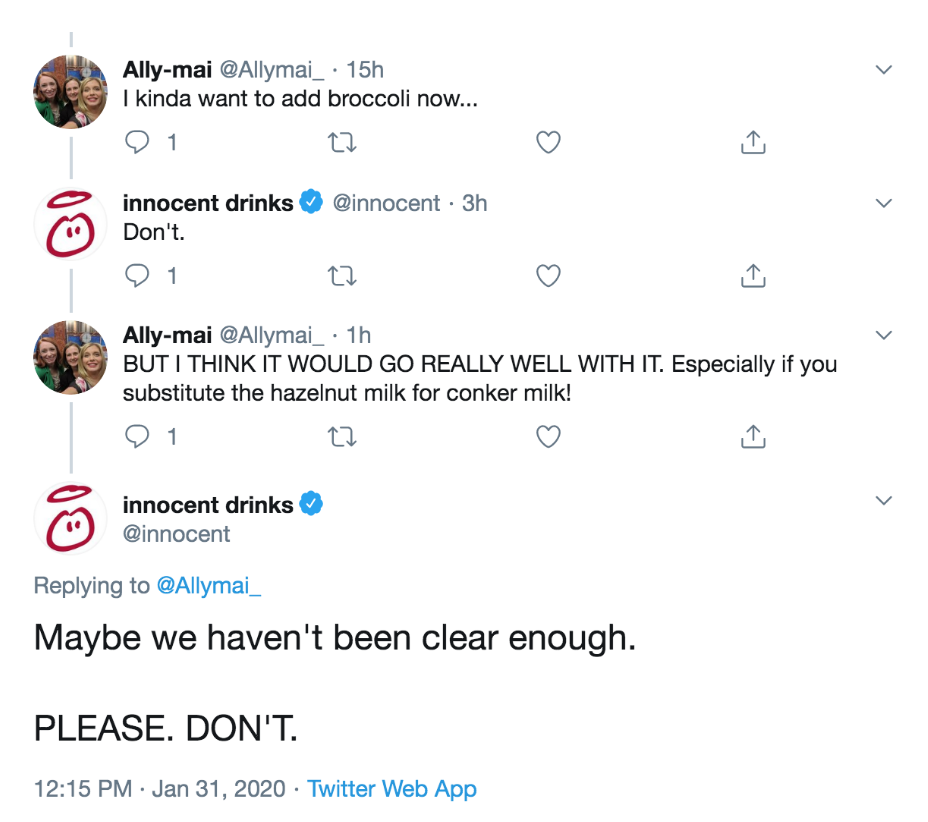
Innocent Smoothies is really good and engaging their customers individually on Twitter.
6. Create More Engaging Content
Increasing your social media ROI can be as simple as creating content that really drives engagement. In fact, content marketing generates over three times as many leads as outbound marketing, and costs 62% less.
So not only will you generate more leads, but you’ll cut your costs and significantly boost ROI.
Consistently sharing great content will keep you at the front of consumer minds and position you as an expert in your industry without having to sacrifice a large chunk of money.
How to Put This Into Action:
It’s important that you tie content creation to your findings from your social listening activities and make sure everything you create taps into key customer pain points.
Scour your competitors’ channels to see the kinds of content they’re creating, ask your followers what kind of content they want to see, and measure which content performs best so you can create more of it.
7. Make Use of Shoppable Features
Social media channels now have tons of shoppable features. For example, Instagram’s Shoppable Posts allow followers to buy direct through the platform, the Swipe Up feature on Stories lets you link to specific landing pages, and Facebook’s CTAs mean you can collect customer information in-app.
If you’re not already using these features, you might be leaving money on the table.
The stats don’t lie. According to studies, some brands can increase traffic to their site by 1,416% by using Shoppable posts.
How to Put This Into Action:With TINT, you can incorporate hotspots, global CTAs, and product CTAs into all your social posts. This means you can add trackable links to your content to specifically see where sales and revenue is coming from.

The North Face regularly uses the Swipe Up feature in their Instagram Stories to direct followers to specific products.
8. Go Behind-the-Scenes
Studies have shown that consumers are more likely to buy from brands that have the same beliefs as them. This is where showing off your personality in your social posts can really work in your favor.
It’s an easy way to increase your ROI, as it doesn’t cost much at all to film a short video of a product being made or to share a quick photo of your team at work. However, the results can be fantastic as this works to build the personality of your brand, make your company more real and build connection with your followers.
How to Put This Into Action:
Leverage social media features like Live video, Stories, and posts to dig deeper into your brand story and give followers a sneak peek into the behind-the-scenes of your brand.
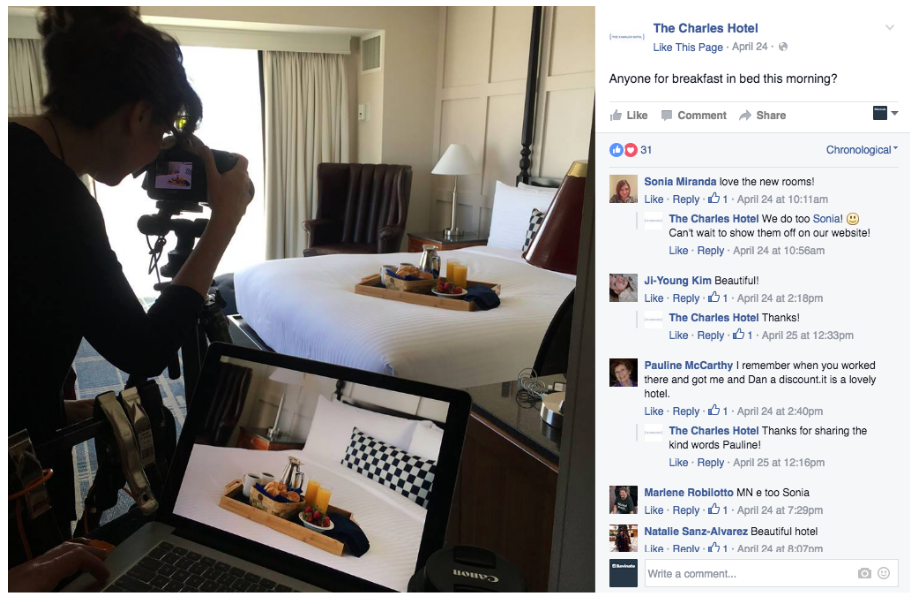
The Charles Hotel shares a behind-the-scenes shot from a staged photoshoot.
Let Social Media Do the Hard Work
Social media has the potential to impact your sales in 2020. Try a few of these strategies to see what works best for your customers.
Don’t forget to use these tips to make measuring the ROI of your social activity a breeze and will help you have a lucrative 2020 where social media does all the hard work for you.

